The Best Home Weather Stations to Become Your Own Meteorologist
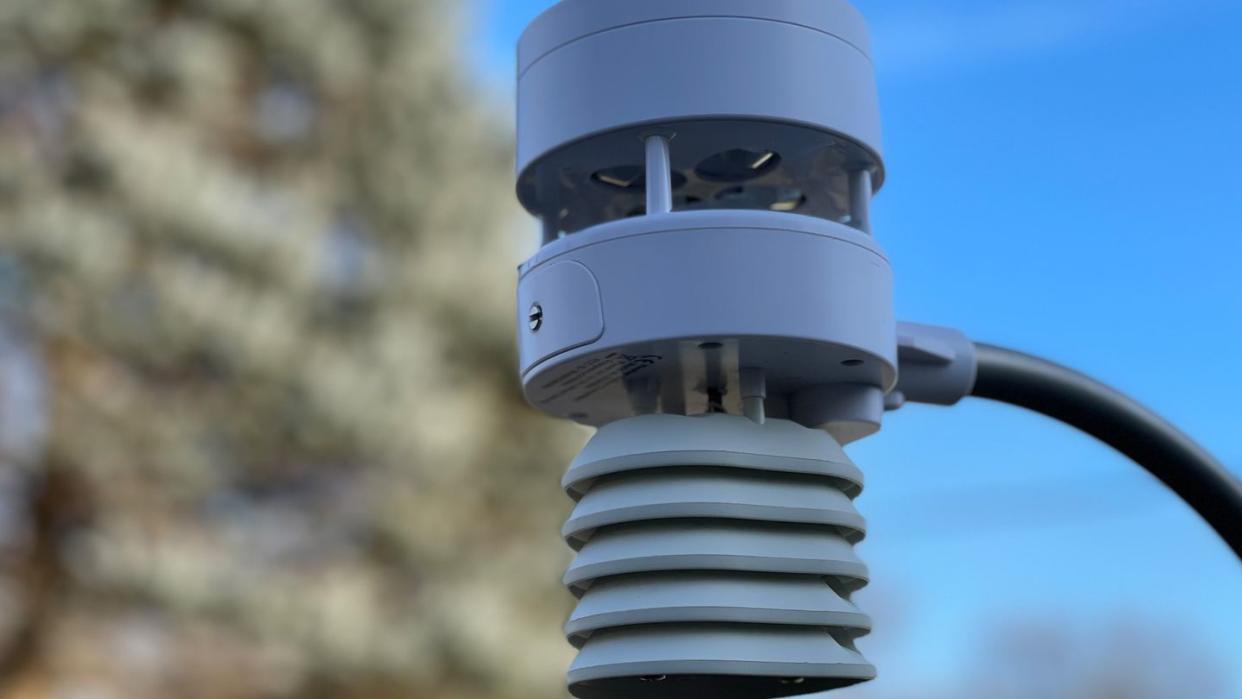
"Hearst Magazines and Yahoo may earn commission or revenue on some items through these links."
Need to know what the weather is? Stop depending on an inaccurate app. Home weather stations record data several times per minute, providing a much more detailed look into the whims of Mother Nature than your phone or the local news can.
A typical home weather station includes a shoebox-sized sensor suite (called an ISS - “Integrated Sensor Suite”) placed outside in an open area. This will require a sturdy mounting location free of any obstructions. Many also include a tablet-sized desktop console display that allows you to view collected information.
Not all weather stations have consoles, however. Some manufacturers opt for a mobile app or website for access to your data, which require a connection to the Internet.
While not a requirement, I recommend opting for internet-connected models because they offer much more functionality. You can share your data with the world via services like Weather Underground. Smart home support is another benefit, which allows you to control other devices using data from your station
Higher-end weather stations offer expandability, which allows you to add additional sensors to your home. This may be useful if you’d like to track temperatures in several locations or have a need for UV and solar radiation, soil moisture, or water leak detection monitoring.
So what is the best home weather station? That depends on your budget and what you plan to use it for. Read on for our hands-on experience and advice on what to look for and how to set up your station correctly.
Best Home Weather Stations
Best Overall: Weatherflow Tempest
Best Value: Ambient Weather WS-2902
Best Prosumer Pick: KestrelMet 6000
Most Expandable: Ambient Weather WS-5000
Best for Weather Enthusiasts: Davis Vantage Vue with WeatherLink Console
The Expert: I’ve been a weather enthusiast since I was a child. As an adult, I’ve combined my professional life – a technology journalist – with my passion for the weather to review weather stations and gadgets. My weather station reviews have appeared on TechHive and Digital Trends, and I have personally tested every station I recommend in my reviews. I also run The Weather Station Experts, a weather gadget reviews blog.
What to Consider When Shopping for a Home Weather Station
Weather stations can monitor many weather conditions, but what they measure varies from model to model. I recommend looking for stations that measure the following:
Indoor and outdoor temperature
Indoor and Outdoor humidity
Barometric pressure
Rainfall
These are the basics, and some stations can measure much more than just these. Wind speed and direction data may be useful if you have an obstruction-free area on your property to place your station; others offer UV and solar energy data or lightning detection.
Connectivity
If you have smart home technology around the house, I recommend purchasing a home weather station that is smart home compatible. You can use your weather data to trigger these devices, such as turning the lights on inside the house when it gets dark outside.
Price
Like most things these days, home weather stations have increased in price (some more than others). While this isn’t necessarily only due to inflation– some of our top picks have gotten substantial upgrades in the past year– you will pay more than you would have before. Where this is the case, I’ve opted to recommend the packages I think are the best value.
Siting
Selecting where to install your weather station’s sensor is one of the most important things you can do to ensure accurate data collection. Find an open area on your lawn and secure the sensor suite between 4- and 6-feet above the ground for the best results. This height is the sweet spot for temperature and rain gauges, though it’s well below the recommended 32.8 feet (10 meters) for an anemometer.
Depending on the model, you will likely need to mount the station on top of a mast, which you must purchase separately. While not uniform across all stations, generally the mast will need to be between 1 inch to 1.5 inches in diameter. Check your station’s instructions for the specific size needed.
A mast in the middle of open space is better than attaching your all-in-one sensor to an eave or elsewhere on your roof, which can temper wind gusts, radiate heat, and create splashes during heavy rainfall. For similar reasons, avoid placing a sensor too close to trees, nearby buildings, other structures, or irrigation systems.
Be mindful of where you put your indoor console. If possible, keep it away from HVAC vents and damp spots to avoid skewing the interior temperature and humidity data its sensors collect.
How We Selected These Home Weather Stations
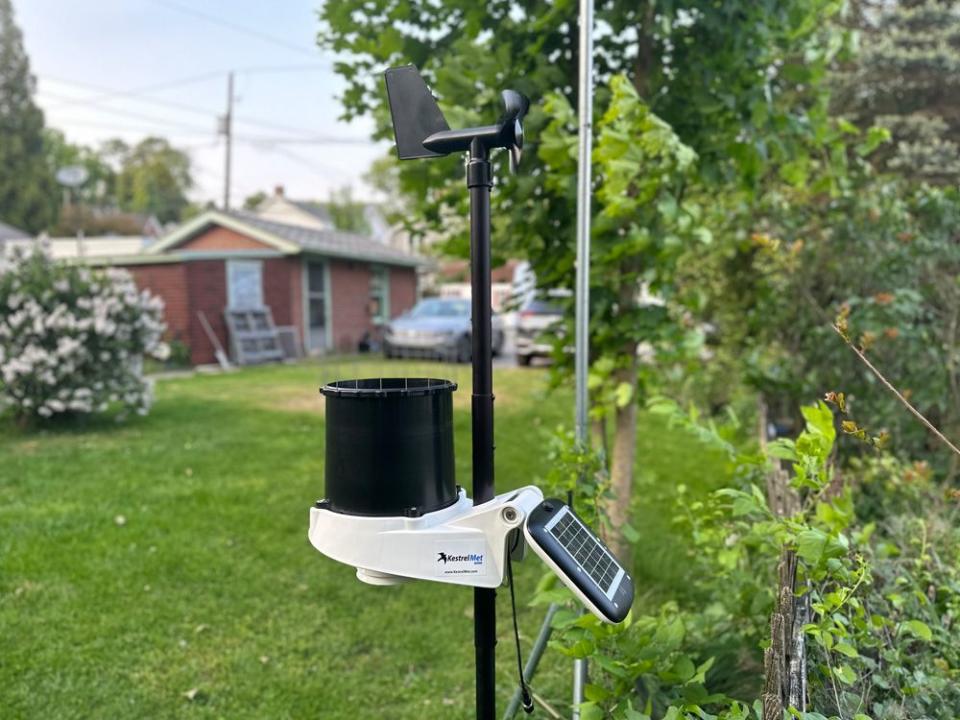
I’ve tested over a dozen weather stations over the past decade, including both budget and high-end models. As scientific instruments, accuracy and reliability are my main focus areas when reviewing each station. These units are tested in a similar environment on the same mast for up to a month to ensure each one experiences varied weather conditions.
In addition to my reviews, I consider customer reviews and other professional reviews of the products to ensure our experiences match other weather station owners.
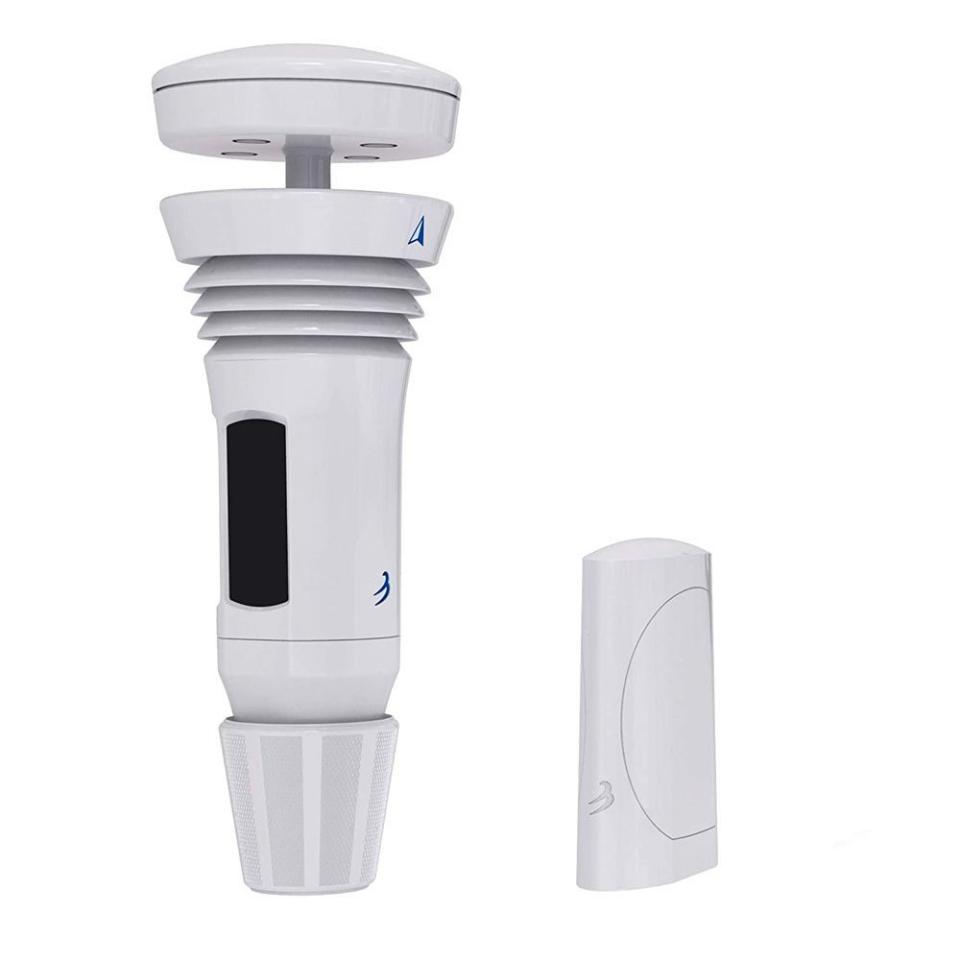
Tempest
amazon.com
$339.00
WeatherFlow has extensive experience in weather stations, having built a network of coastal weather stations that are invaluable in tracking coastal storms and hurricanes. The Tempest is the company’s first home weather station.
For the most part, this unit is a decent starting point. Powered entirely by the sun, it has no moving parts: the rain gauge is a haptic sensor on the top, and wind speed and direction are measured sonically. Lightning detection is also the best for any personal weather station I’ve tested.
The Tempest can also trigger your smart home devices thanks to support for IFTTT, a smart home automation service. Other than some accuracy issues with the haptic rain gauge, it’s among the best on the market.
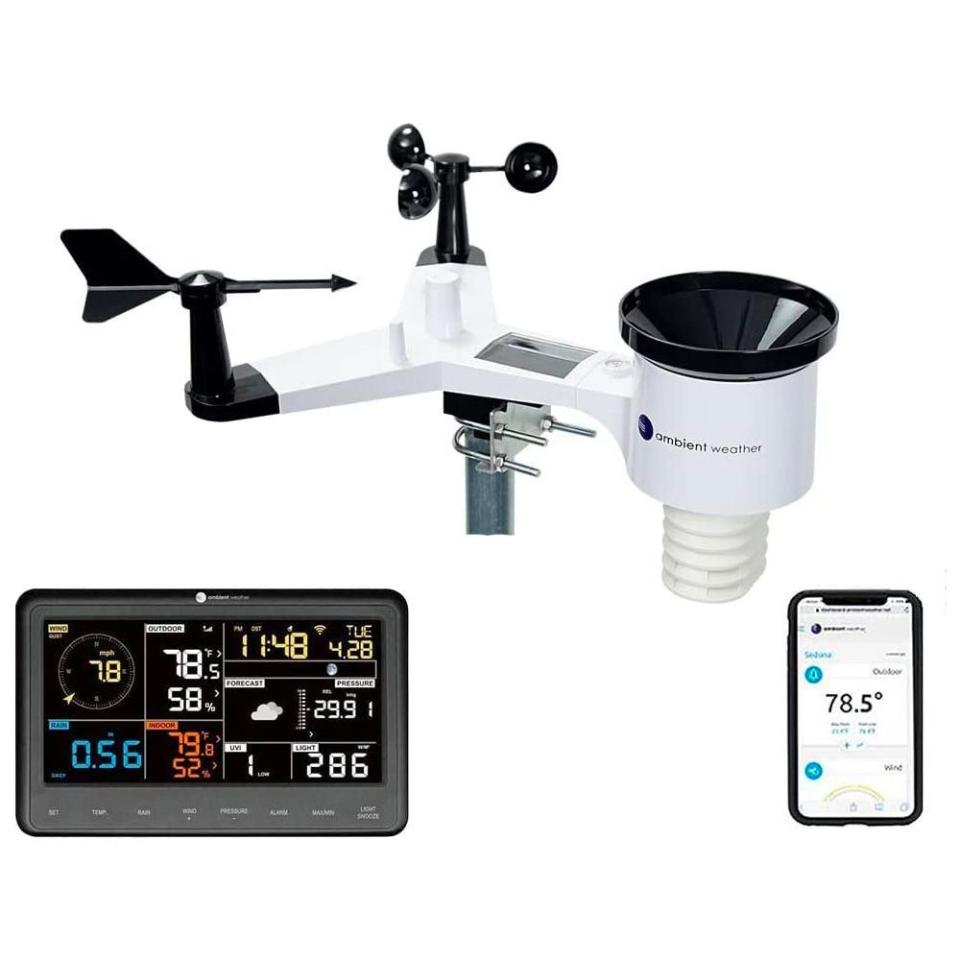
WS-2902
amazon.com
$189.99
When it comes to value, you can’t get much better than the Ambient Weather WS-2902. Now in its fifth update, the station is easier than ever to install, thanks to an upgraded in-app setup process. Also new as of the last generation is a better console, which is easier to see compared to earlier versions that weren’t readable unless you were looking at it head-on.
While it has no lightning detection capabilities, it has everything else the WeatherFlow Tempest does at a significantly lower price. I was shocked at how accurate the sensors are for a “budget” weather station: it’s almost as good as some higher-tier options. Sure, it isn’t expandable and needs batteries for the sensor suite, but the price makes up for that.
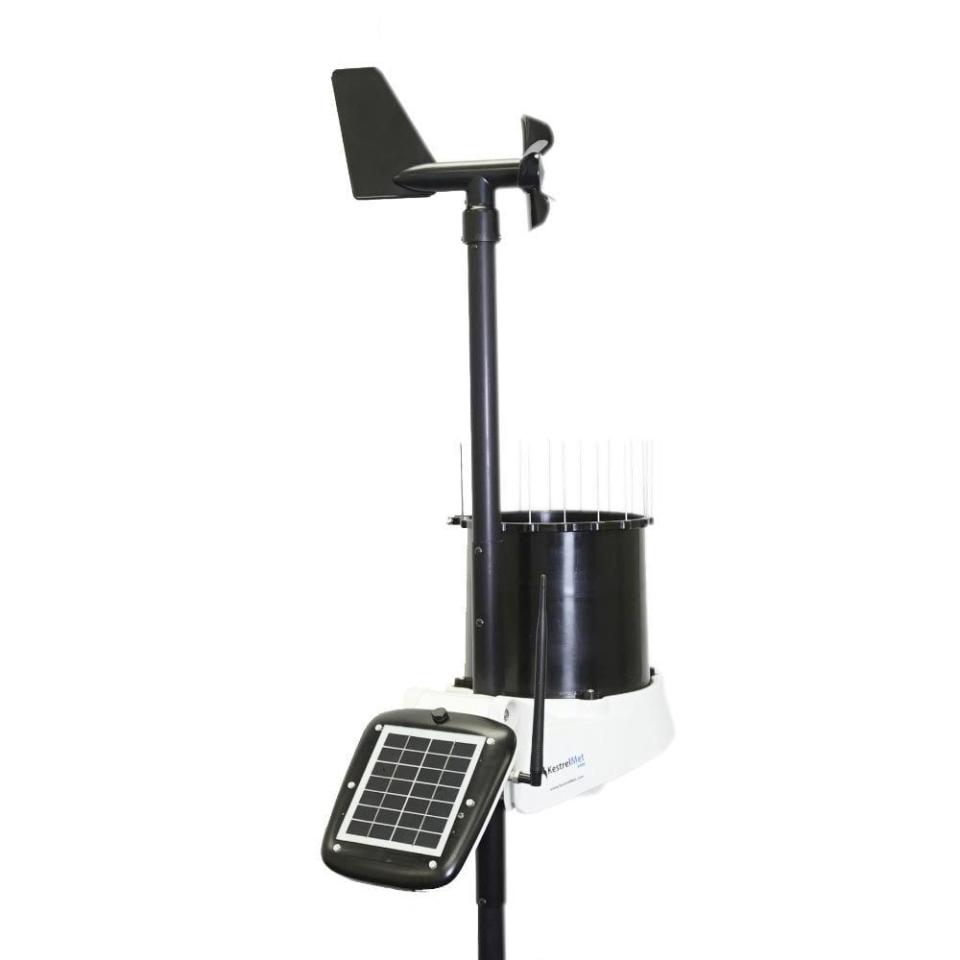
KestrelMet 6000
walmart.com
$1398.00
Kestrel is better known for its high-quality handheld wind and weather meters, but the brand’s first foray into home weather stations is a home run. Since it is a Neilsen-Kellerman company (as is Ambient Weather), the 6000 uses the Ambient Weather Network for internet and smart home connectivity.
Kestrel omitted UV and solar sensors (which nearly every cheaper Ambient Weather station has) and made it optional, which is one of my few issues with the 6000. But the inclusion of fan aspiration in the base model and the option to connect to your station via the cellular network make this a top choice for more demanding weather enthusiasts, beating out even the Davis Vantage Pro2.
One potential negative: we don’t have the reliability data that we have with Davis stations. The Vantage Pro2 (or something similar) has been sold for two decades: the 6000 has been on the market for only a year. So far so good: save for a software bug that affected barometric pressure readings that has since been corrected, operation has been flawless.
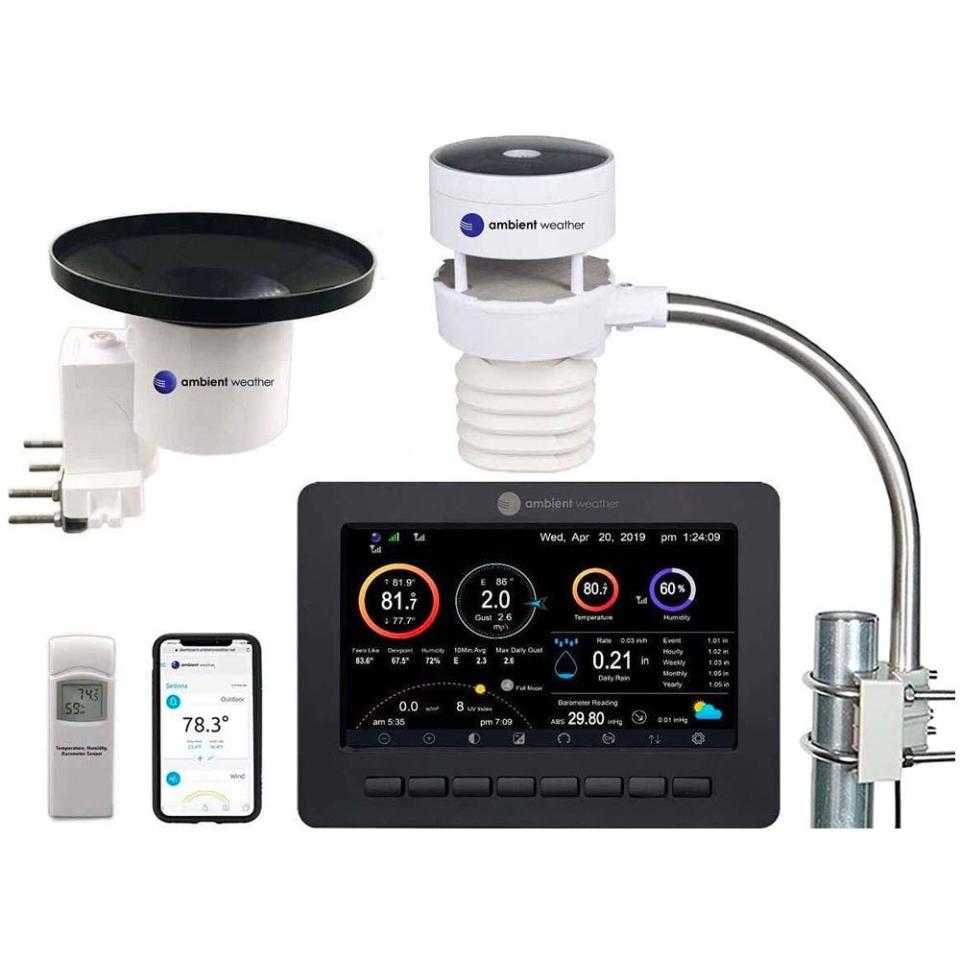
WS-5000
amazon.com
$449.99
The Ambient Weather WS-5000 is one of the most fully featured weather stations on the market. While it doesn’t include a lightning detector in the base package, you can add one and a half-dozen other optional sensors. All the sensors I tested were accurate, although all the optional sensors require batteries, so that’s something to keep in mind.
The biggest thing going against the WS-5000 is its price. At one point, this station was just $300, making it a bargain. Now at $450, it is pretty expensive, even with longer-range connectivity between the station and your sensors. But it's worth the money if you’d like to track more than the standard weather measurements.
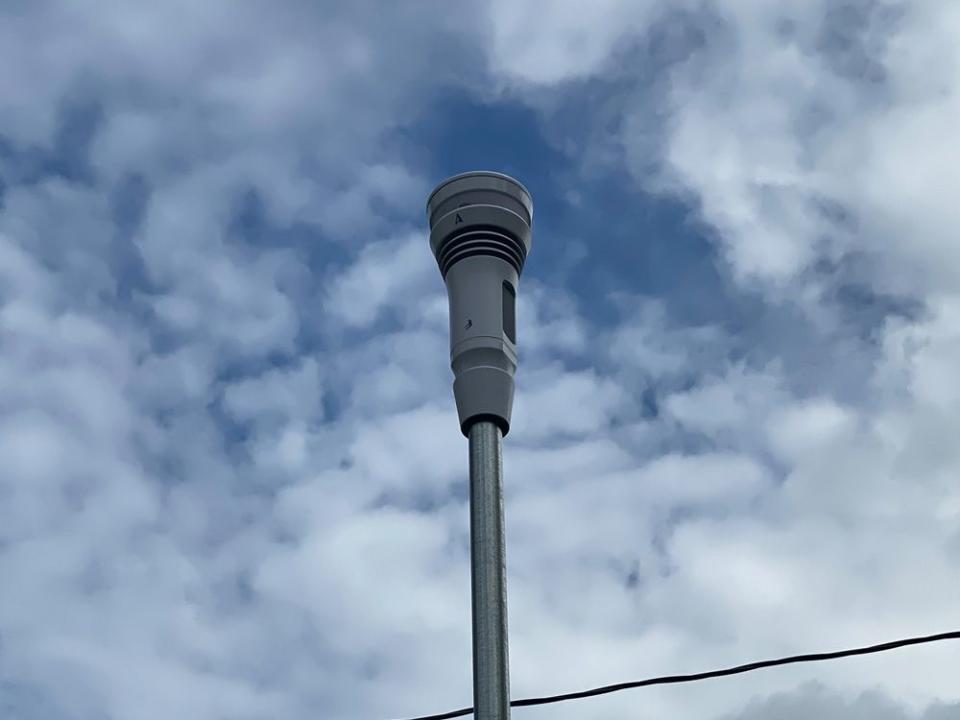
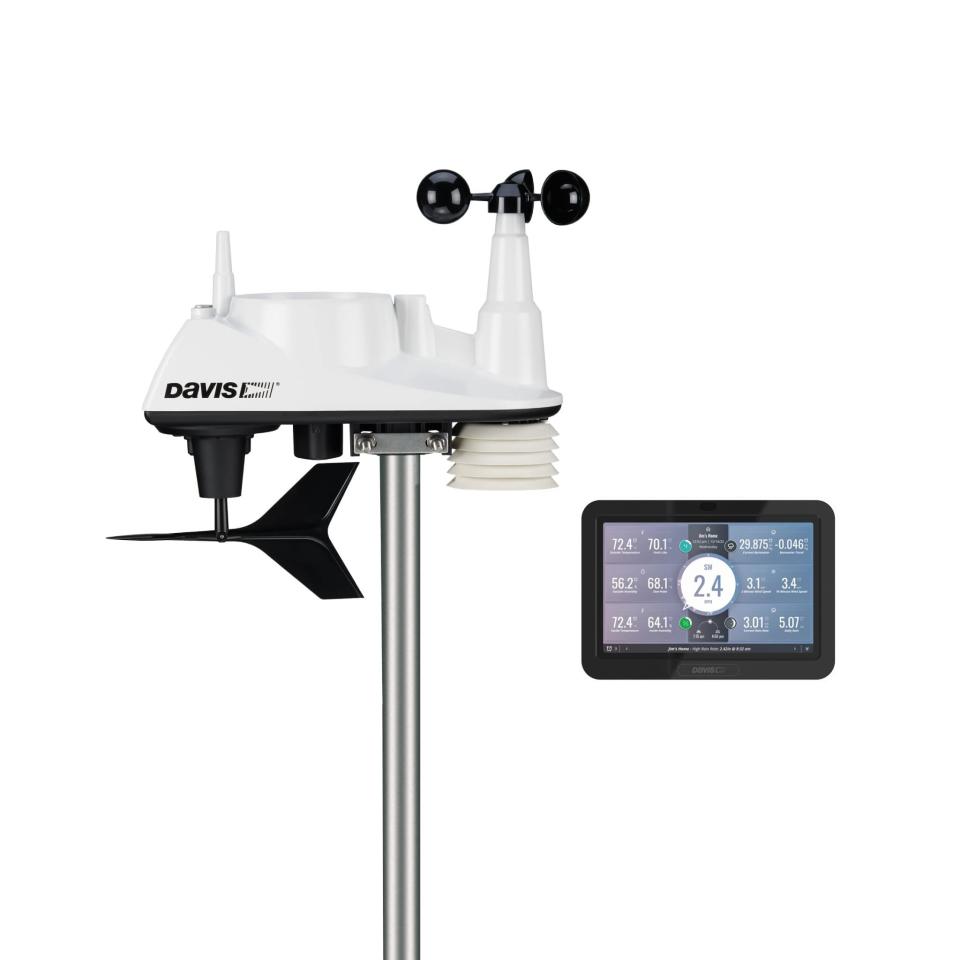
Vantage Vue with WeatherLink Console
amazon.com
$542.00
The Davis Instruments Vantage Vue is now two decades old. For much of that time, it was using the same console – which even at the time it was released was a bit dated. That’s changed with the WeatherLink Console, which puts the Vantage Vue in line with every other modern home weather station.
I’ve had a Vantage Vue installed continuously since 2016, and I can attest to the accuracy, which only seems to slip in hot and sunny weather due to a lack of fan aspiration around the temperature sensor. The console is feature packed, but the UI isn’t user friendly, and it lacks AirLink support. I’m told updates will address these issues over time.
While I only mention the Vantage Vue here, Davis has a high end model called the Vantage Pro2. However, the KestrelMet 6000 is ever so slightly better, thanks to the inclusion of fan aspiration. That’s a nearly $300 option on the Pro2.
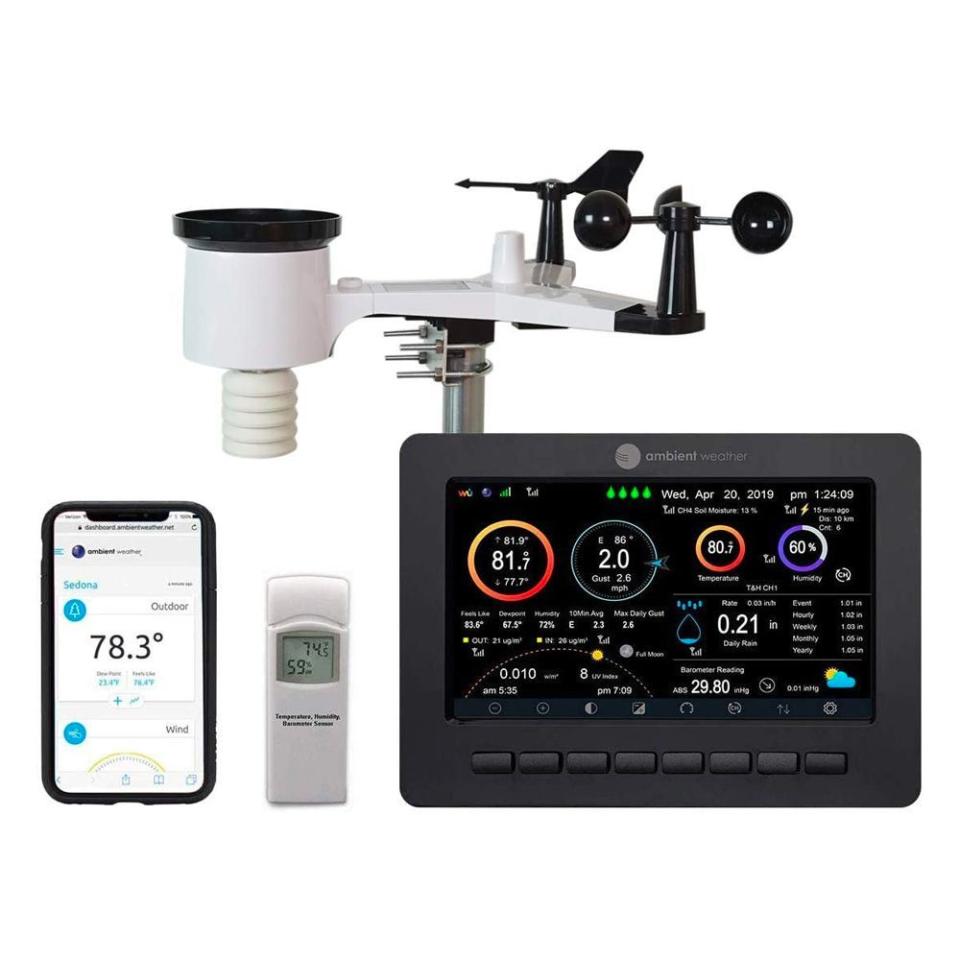
WS-2000
amazon.com
$299.99
While I haven’t had a chance to test the WS-2000 myself, I’ve tested the sensor suite in the WS-2902, and the console in the WS-5000. That’s essentially what the WS-2000 is. While you’ll get slightly less accurate ratings due to the lower quality sensors, the console allows you to add all the optional sensors of the WS-5000 without breaking the bank.
While we’d still steer those looking for accuracy to the WS-5000 or Davis Vantage Vue, the WS-2000 is an excellent compromise for budget-conscious weather enthusiasts.
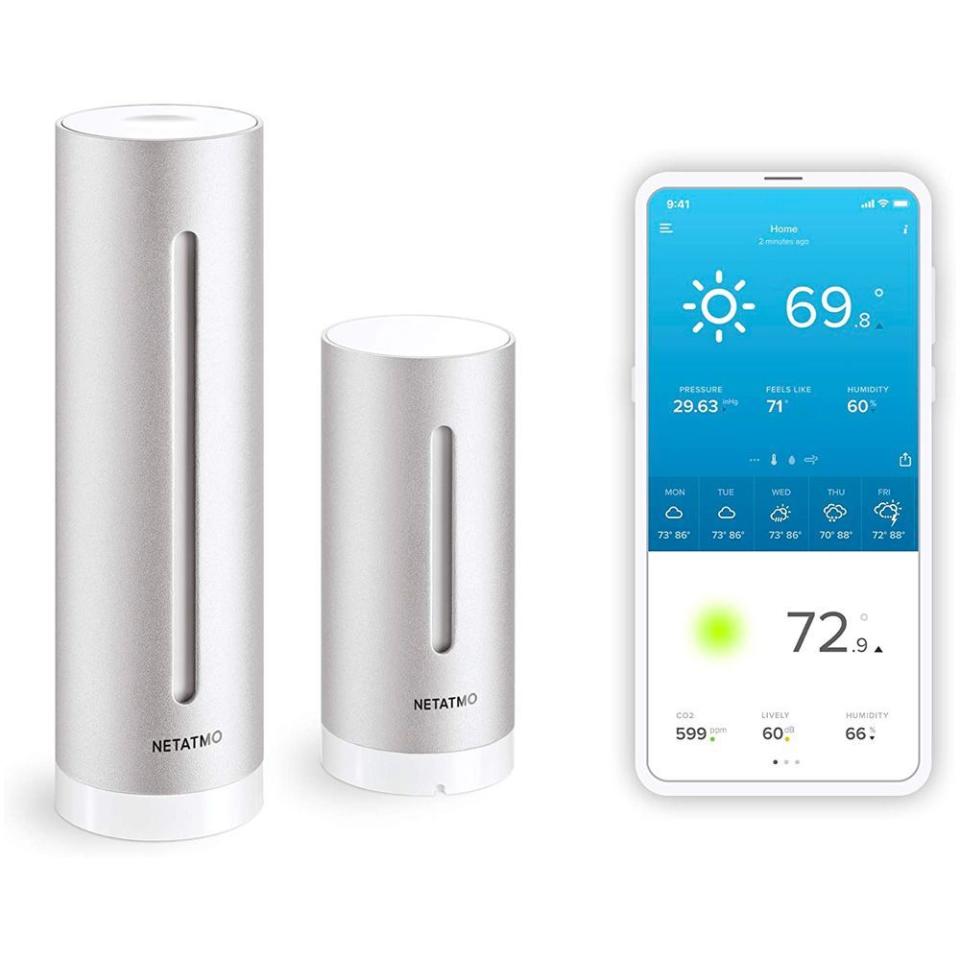
Weather Station
amazon.com
$149.99
The base Netatmo weather station model includes two sensors: a battery-operated outdoor tower that tracks temperature, humidity, and barometric pressure; and an AC-powered indoor one that goes beyond competitors to keep an eye on CO2 and sound levels. All these measurements were generally accurate in my test, although you must purchase the compatible rain gauge and anemometer separately.
This makes the Netatmo more expensive than many of our recommendations. But if you use Apple HomeKit, it’s one of the few home weather stations to support the technology.
There’s also no console. All of your data is only accessible through the Netatmo Weather app or its website, but both are well designed with easy access to historical data and graphing tools. You can also pair the Netatmo with Amazon and Apple smart speakers and request weather reports from Alexa or Siri.
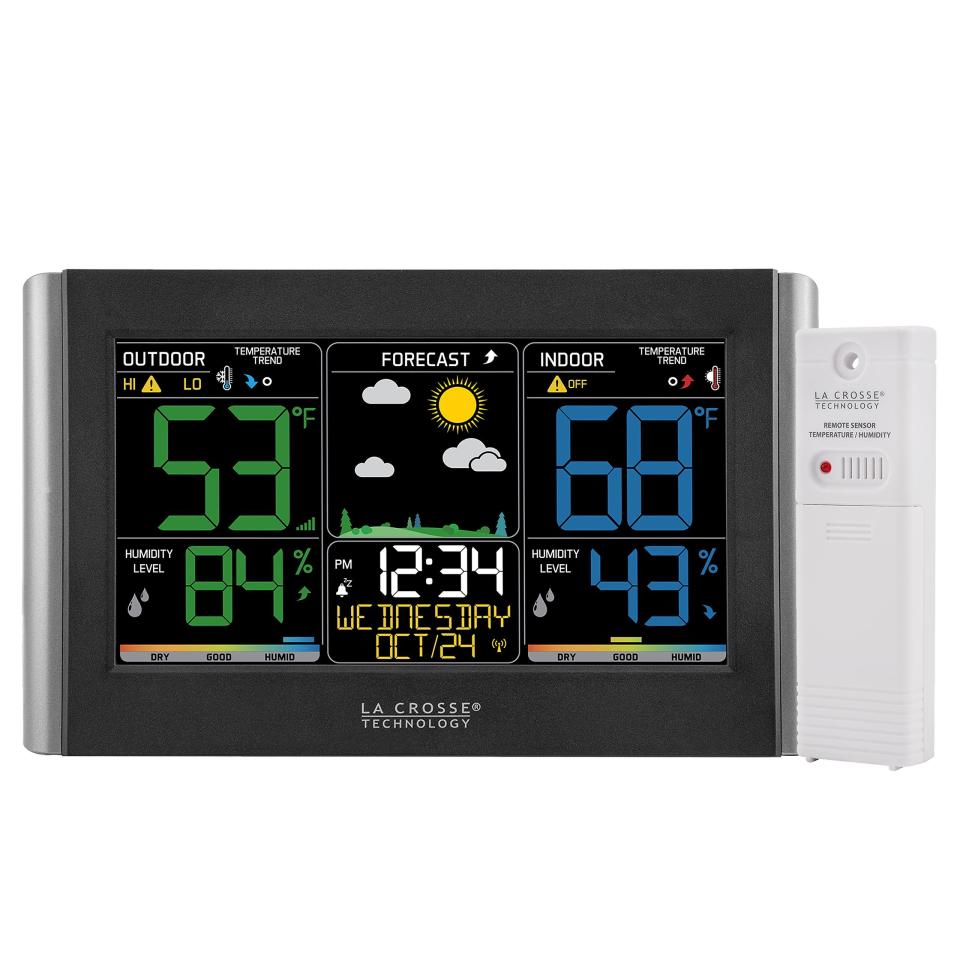
C85845-INT
amazon.com
$49.98
If you don’t need all the bells and whistles of a home weather station, the LaCrosse C858545-INT is a great alternative. The sensor only tracks temperature-related data, such as heat index, humidity, and dew point. That means no records on rainfall or wind, but this data is less crucial if you're not caring for a garden or farm. The C85845-INT also can’t connect to an app or your smart speaker.
Instead, all your data lives on a full-color LCD screen housed in a 9- by-5.4-inch display, the largest here. The already bright screen has backlighting for nighttime use and other dark conditions. The console and the sensor are battery-operated, and an indicator on the display lets you know when it’s time to swap in a fresh set.
Expert Ed Oswald on why you shouldn’t depend on a smartphone weather app, why everyone should own a home weather station, and his first weather memory
These days, everyone gets their weather information from a weather app on their phone. But you say this is a bad idea. Why?
Ask any meteorologist their biggest pet peeve, and it’s people who use a weather app to get their weather information. While it’s great to get a general idea of what’s going on and an easy way to get alerts, you shouldn’t depend on it.
The information on these apps is often outdated and depends on you having a good signal to get the alerts. Also, short-term forecasts in these apps are often automatically created, which means no human has taken a look at the forecast to see if it makes sense – or matches real-world conditions.
How does a home weather station help understand our local weather?
Most of us live far away from the “official” weather reporting stations, often found at airports and military bases. The differences in the weather between the official station and your backyard can be pretty substantial.
Here’s a real-life example: a few years back, we had one of the worst rain storms I’ve ever seen. I got more than 5 inches of rain, and places less than a mile or two to my west saw as much as 8 inches.
That official weather station? It recorded just 2 inches. Significant differences in weather conditions across just a few miles are more common than you think, and home weather stations help fill those holes in the official observing network.
What was the most memorable weather event in your life?
I would have to go back to 1985 and Hurricane Gloria. We lived in southeastern Pennsylvania then, and although we were far inland, Gloria’s outer rainbands passed through for much of the day.
I can distinctly remember the trees outside the window whipping around in the gusts and the sheets of rain. I was utterly mesmerized by it and sat with my parents, watching the local weatherman give the latest weather reports and what was happening outside. I wanted to be just like him.
Shortly after that, my grandmother bought me a simple weather station, and I've owned weather gadgets ever since. I guess you could say that stormy day back in 1985 is what started it all.
You Might Also Like

